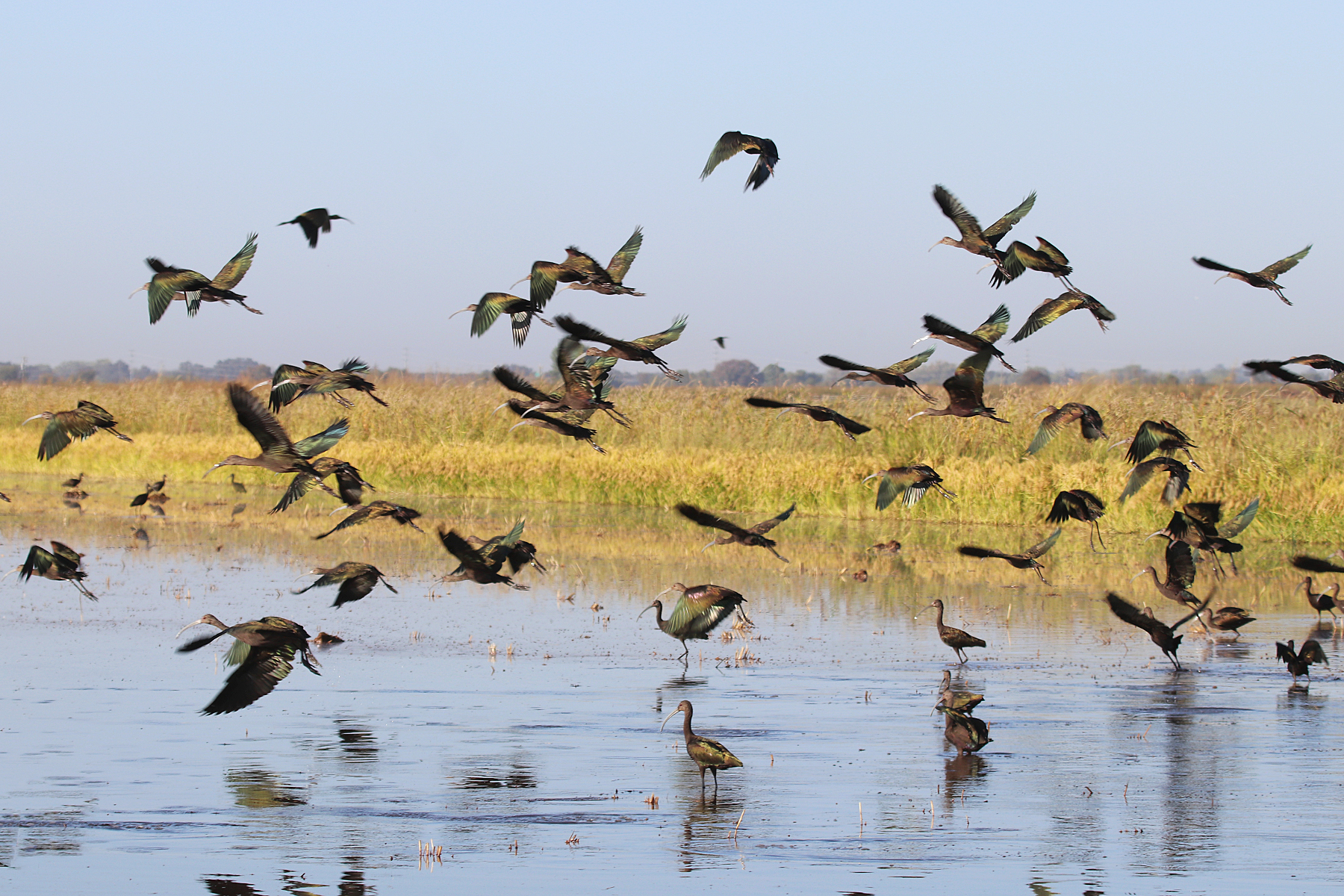Rice
Where fields are flooded, as is the case on wildlife refuges and winter flooded rice fields, large numbers of geese, ducks, swans, and other waterfowl, as well as wintering shorebirds, can be observed. Waterfowl arriving in the Central Valley during annual migrations require a diet rich in carbohydrates. Agricultural crops are preferred by the many species of waterfowl because they are widespread, easily accessible, and provide the needed high levels of carbohydrates. Waterfowl also benefit greatly from the invertebrate populations that thrive in flooded fields, especially during the molt and egg-laying periods, when all species of waterfowl have increased protein requirements. These areas also provide the necessary habitat and forage for wintering and breeding shorebirds and riparian songbirds. Each year, between 500,000 and 600,000 acres of rice are planted in the Sacramento Valley, providing habitat for more than 230 species, including many birds. In a typical fall and winter, around 250,000 to 350,000 acres of this rice land is flooded, providing significant and essential habitat for Pacific Flyway waterbirds and nearly 60 percent of waterfowl food resources in the Sacramento Valley.
Refuges
The refuges in the region provide year-round habitat that compliments the efforts of landowners that also provide habitat. The National Wildlife Refuges and State Wildlife Areas provide 27,000 acres of vital Pacific Flyway habitat in the region. But, several of the refuges and wildlife areas in the Sacramento Valley are not providing their maximum habitat value because of a lack of accessible water, deficient conveyance infrastructure, or a mix of both. The link below provides an assessment of the infrastructure needs of the Central Valley refuges to maximize their potential habitat value.
Managed Wetlands
More than half of the Sacramento Valley’s wetlands are in private ownership, managed primarily for ducks and other waterfowl. These lands total more than 40,000 acres in the Valley.








